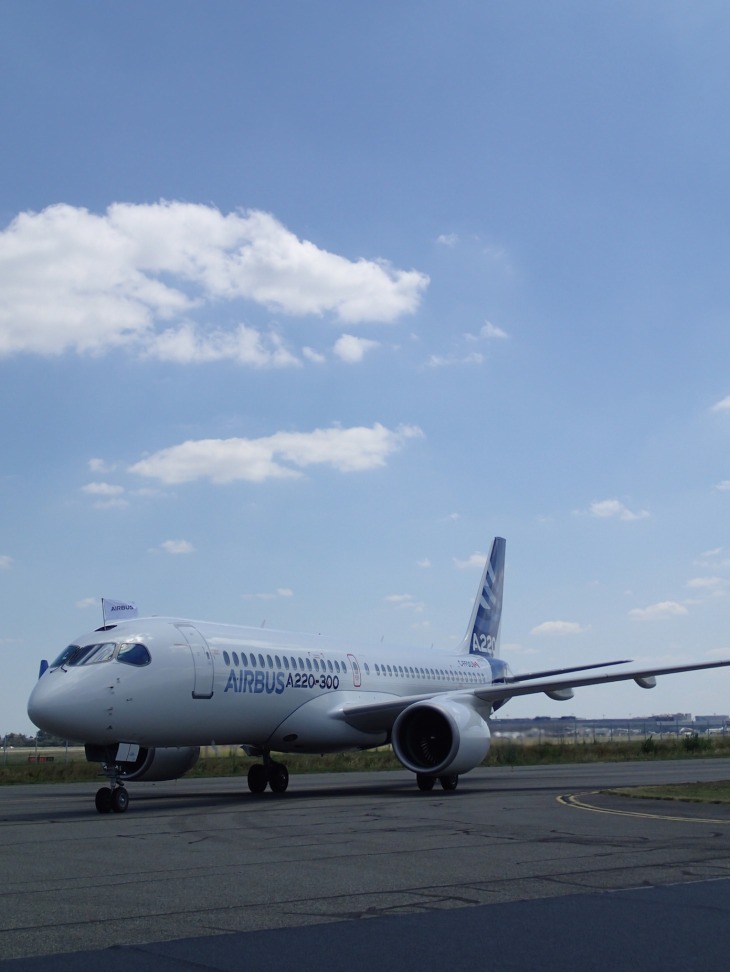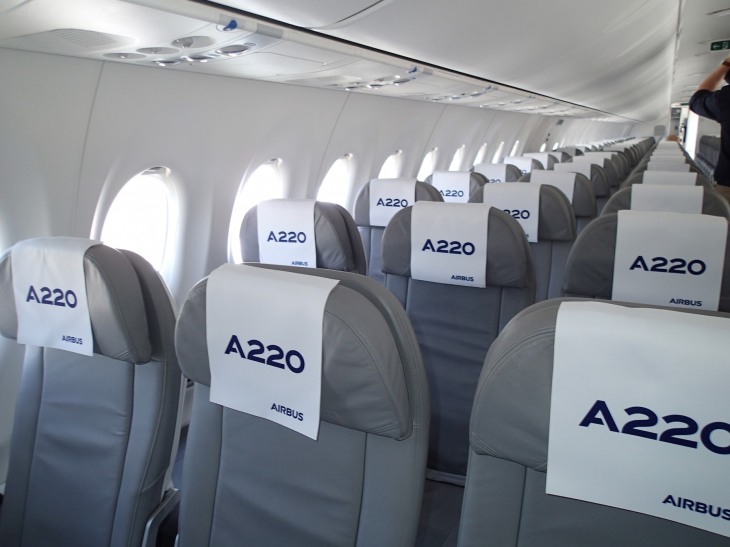
is the Cute little A220 ready to conquer Asia? pic/shukor yusof
In between quaffing copious amounts of red and white grape juice from the terroirs of Toulouse and savouring the delicacies the southwest of France offered during lunch, it was easy to miss the reason we were all there this Tuesday week: to witness the launch of Airbus’ new cute little aircraft, the A220-300.
Except that the new jet isn’t actually new; two years ago in June 2016 the plane, previously known as a Bombardier CSeries jet, was delivered to Swiss. Those on board the CS100 were so impressed with the plane’s economics and comfort and wrote many positive things about it.
Airbus’ legendary salesman, the now retired John Leahy, called the CSeries a cute little airplane and vowed to – in not so many words – kill the programme. It was therefore a tad ironic that on Tuesday, July 10 the European manufacturer rolled out a CS300 and rebranded it as the A220-300, “the latest addition to the Airbus family.”
To recap, Airbus officially took control of the CSeries Aircraft Limited Partnership (CSALP) on July 1. It has a 50.01% stake with Bombardier and the Quebec province holding minority stakes.
A panel comprising the A220 programme sales chief David Dufrenois, head of customer support and engineering Rob Dewar, director of cabin marketing Christine de Gagne and head of product marketing Antonio de Costa tried very hard to convince a skeptical audience that there really was a big demand for aircraft with 110-130 seats.
Dufrenois stunned everyone in the hall (at least the rationale among us) when he announced the world needs at least 3,000 of these cute little thingies over the next two decades. And what’s harder to digest was that Airbus (and Boeing) had spent years telling us the regional jet market was too small to bother.

CSALP head of sales david dufrenois and friends say global demand for the next 20 years will be 3000 regional jets. pic/shukor yusof
According to Ascend, regional jets – those that seat between 90 and 120 – make up just 5% of all commercial planes flying worldwide. The majority, or 66%, of planes fall under the narrowbody, single-aisle segment, typically the A320 and B737.
Never mind that, we say. There is a market for regional jets or else Airbus would not have gone into it. And if anyone can sell lots of cute little aircraft, the Toulouse-based planemaker is well positioned to do that, just as it made the A320 the workhorse of low-cost carriers worldwide.
Boeing, too, seems to be keen to gobble up Embraer and get into the regional race; the E190-E2 family has already been dubbed the “Boejet”.
But where will the market for these aircraft be?
Embraer, the market leader in regional jets, dominates the market in North America, where over 2,000 planes (or 60%) of the global fleet are concentrated. Europe is also a fairly large home for regional jets.
In April Norwegian low-cost carrier Wideroe took delivery of its first (of three) E190-E2 while KLM subsidiary Cityhopper has successfully exploited its fleet of 45 E-jets around the continent. The real challenge for both Airbus and soon Boeing, is how to convince Asian airlines to buy these planes.
Dewar thinks the A220-100 and -300 are perfect for China because, he explained, the plane is especially suited to high altitude airports. Seriously, how many airlines in China would buy an A220 because it can land well in Tibet, or Bhutan? The A319 already does a good job at it.

middle seats on the a220 are cool, say CSALP bosses, because they are more spacious. pic/shukor yusof
The potential for regional jets is actually in Southeast Asia, where there are many archipelagic countries where an A220 or an E2 aircraft makes perfect sense. That’s because most travellers in this region hardly fly beyond two hours.
In countries such as Indonesia, the Philippines, Malaysia and Thailand, regional aircraft have the right capacity for many routes that don’t justify an A320 or a B737. Additionally, regional aircraft can compete well (or better) when it comes to operating costs, against traditional single-aisle planes, and this is especially true of short-haul sectors.
All things being equal, both Airbus and soon Boeing, must be realistic about the size of the market for regional jets. The Teal group noted that in 2016 regional jet deliveries made up just under 7% of the world transport market value compared to 15% in 1989.
To make things more complicated, the regional jet market is over-crowded, with China’s COMAC aggressively pushing its own homegrown aircraft, Russia’s Sukhoi and Japan’s Mitsubishi also competing for a very small slice of the niche market.
